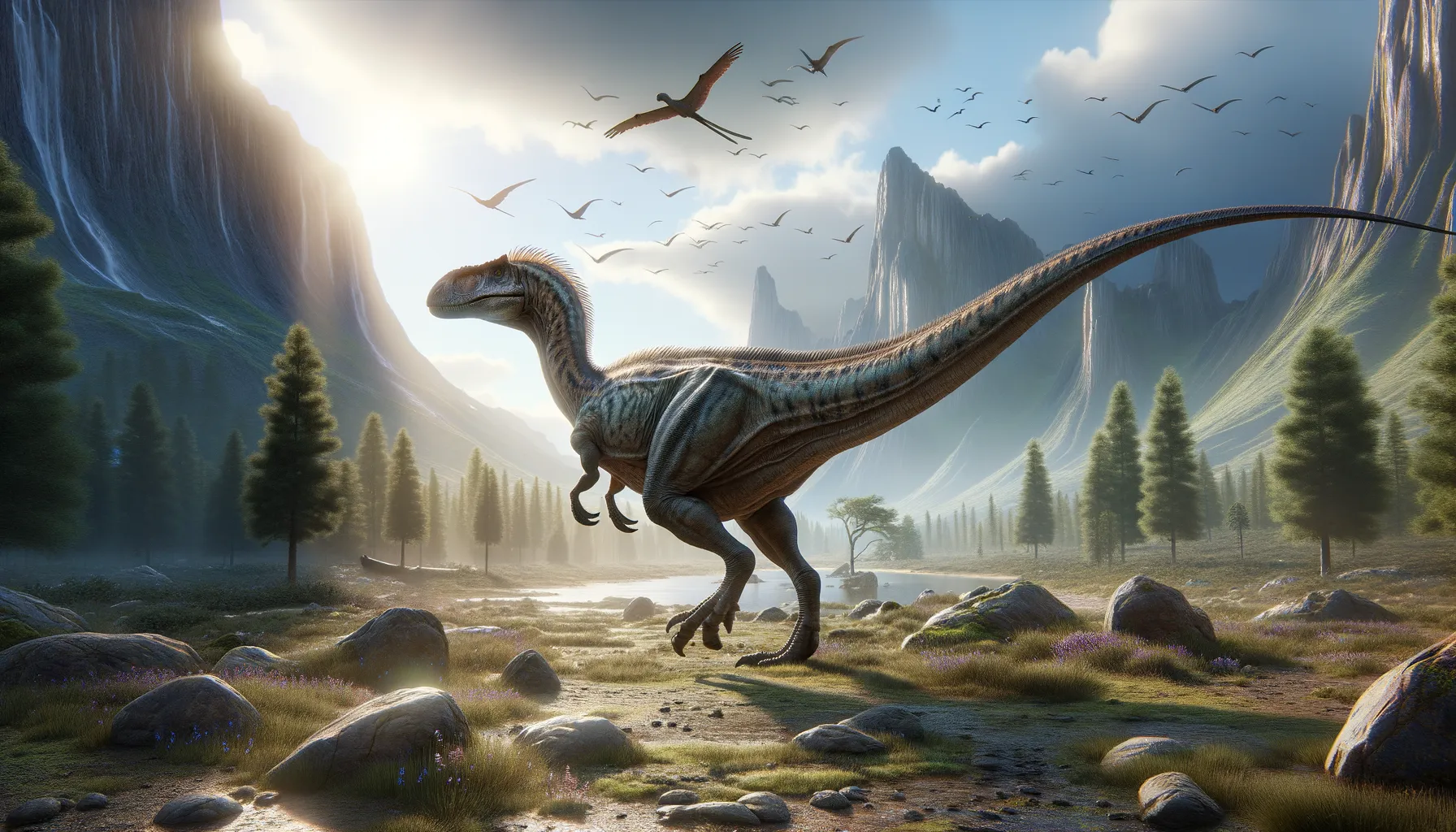
Piatnitzkysaurus
A swift predator of the Jurassic era.
Period
Jurassic
Length
Reached lengths of up to 5 meters.
Height
Stood about 4.5 feet tall at the hip.
Weight
Weighed around 900 kilograms.
Piatnitzkysaurus was a medium-sized theropod dinosaur that lived during the Middle Jurassic period. Named after the Russian geologist A.M. Piatnitzky, this carnivorous dinosaur roamed what is now Argentina. It is noted for its slender build and agility. Its discovery has provided valuable insights into the evolutionary lineage of theropods, which eventually led to modern birds.
Diet
Piatnitzkysaurus was carnivorous, primarily feeding on smaller dinosaurs and reptiles. Its teeth were adapted for slicing flesh, and it likely used its agility to hunt and capture prey.
Hunting
This dinosaur likely relied on an ambush strategy, using elements of surprise to capture its prey. It might have hunted in small groups, enhancing its effectiveness as a predator in its environment.
Environmental challenges
Living during the Jurassic, Piatnitzkysaurus would have faced challenges such as climate fluctuations and competition for resources with other predators. Natural disasters like volcanic activity could have drastically affected its habitat. Predation threats from larger theropods also posed ongoing risks, alongside food scarcity during harsher seasons.
Speed
Moderate speed for a bipedal dinosaur.
Lifespan
Approximately 20 to 30 years.
First discovery
Discovered in Argentina, 1979.
Fun Facts
- Piatnitzkysaurus was a theropod dinosaur that lived about 165 million years ago during the Middle Jurassic period.
- This dinosaur roamed what is now known as Argentina, making it one of the fascinating examples of South American dinosaur diversity.
- Piatnitzkysaurus had sharp teeth and claws, suggesting it was a carnivore that hunted smaller animals.
- It was named after the Russian geologist Alejandro Matveievich Piatnitzky, highlighting the scientific tradition of honoring contributors to geology and paleontology.
- Piatnitzkysaurus was relatively small compared to some of its giant theropod relatives, measuring about 4.3 meters (14 feet) in length.
- Its fossils were first discovered in the 1970s, shedding light on dinosaur evolution in Gondwana, the prehistoric supercontinent.
- This dinosaur is an example of how diverse the theropod group was, showcasing the variety in size and function within these ancient carnivores.
Growth and Development
Young Piatnitzkysaurus likely grew rapidly to avoid predation, with significant changes seen as they matured. Juveniles would have been more vulnerable, needing to develop strength and size quickly. Its skeletal structure suggests adaptations for fast growth during the early stages of life.
Habitat
Piatnitzkysaurus inhabited lush floodplain environments in what is now South America. Its habitat would have consisted of dense forests and open areas, providing a variety of ecological niches. The region supported a diverse range of flora and fauna, ideal for both cover and prey availability.
Interaction with other species
As a mid-level predator, Piatnitzkysaurus would have competed with other carnivorous dinosaurs for food. It likely interacted with herbivorous species, both as a predator and through indirect competition for resources. Its presence in a dynamic ecosystem would have involved complex interactions, influencing the balance of the local food web.
Natural lifespan
It had an estimated natural lifespan of up to 30 years in the wild.
Reproduction
Piatnitzkysaurus, like most theropods, was thought to reproduce by laying eggs. Nesting grounds would have been selected meticulously, offering protection from environmental hazards and predators. Parental care in terms of safeguarding eggs till hatching might have been present but is less documented.
Social behaviour
Evidence suggests that Piatnitzkysaurus might have exhibited some level of social behavior, perhaps hunting in small packs or coexisting in loosely structured groups. Such social dynamics would have assisted in hunting efficiency and protection against larger predators.
Fossil locations
Fossils of Piatnitzkysaurus have been found primarily in Patagonia, Argentina. These discoveries have been pivotal in understanding the diversity of Middle Jurassic theropods. The fossil record in Argentina has offered considerable insights into the evolutionary pathways of early theropods.
